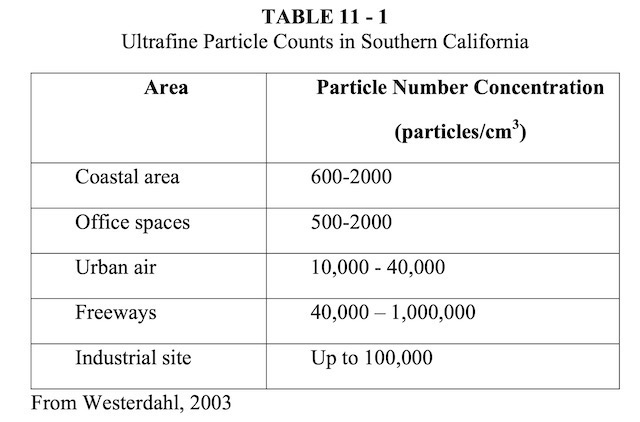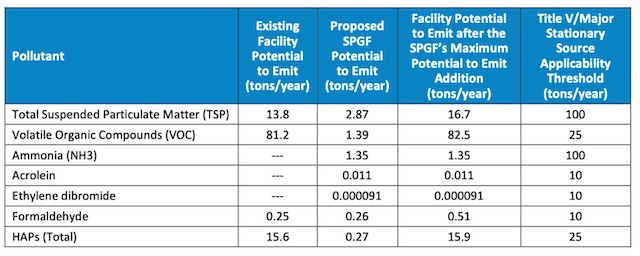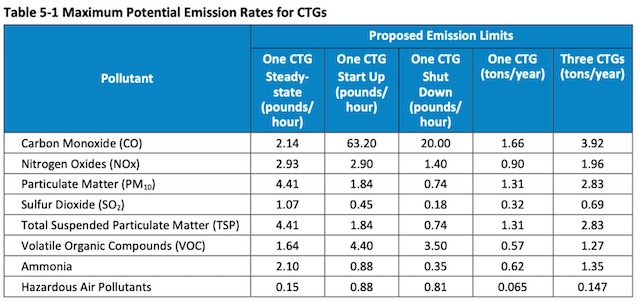The People Of Newark Are Being Duped By DEP Review Of Proposed Fossil Power Plant
Community health and real risks and impacts of air pollution are completely ignored by DEP
Yesterday, in part one, I wrote about the greenhouse gas emissions and DEP permit related issues of the proposed $118 million PVSC power plant. The DEP allowed PVSC to cook the numbers and mislead the public.
Today, in part two, I want to focus on fatal flaws in DEP air quality permit regulations that are exposed by the PVSC permit review process.
Let me start with an impeccable source, so that folks don’t have to take my word for how flawed and corrupt the DEP air permit review process is.
As I wrote, over 20 years ago, US District Court Judge Orlofsky wrote a scathing opinion that criticized the DEP air permit process and found that it violated the civil rights of the people of Camden, see: South Camden Citizens v. NJ Dept. of Environ., 145 F. Supp. 2d 446 (D.N.J. 2001) (emphases mine):
As described in greater detail in this Court’s Findings of Fact and Conclusions of Law set forth below, the NJDEP granted the necessary air permits to SLC to allow its proposed facility to begin operations. In doing so, the NJDEP considered only whether the facility’s emissions would exceed technical emissions standards for specific pollutants, especially dust. Indeed, much of what this case is about is what the NJDEP failed to consider. It did not consider the level of ozone generated by the truck traffic to and from the SLC facility, notwithstanding the fact that the Waterfront South community is not currently in compliance with the National Ambient Air Quality Standard (“NAAQS”) established by the EPA for ozone levels, nor did it consider the presence of many other pollutants in Waterfront South. It did not consider the pre-existing poor health of the residents of Waterfront South, nor did it consider the cumulative environmental burden already borne by this impoverished community. Finally, and perhaps most importantly, the NJDEP failed to consider the racial and ethnic composition of the population of Waterfront South.
ALL THOSE FAILURES REMAIN.
Nothing has changed in the DEP air permit process since Judge Orlofsky wrote that.
A review of the PVSC air permit application confirms that. So, let’s highlight those flaws. (we’re following the numbering in yesterday’s post):
II) Community Health Impacts – Risk Assessment and Air Quality
Keep in mind Judge Orlofsky’s criticism as we drill down on the air pollution and health issues raised in the DEP review of the PVSC permit application. Those issues are all embedded and masked in the complex DEP’s air quality monitoring data, pollution dispersion modeling, and risk screening and risk assessment elements of the permit application.
Here are bullets of critical factors that Judge Orlofsky noted that DEP failed to consider:
- the level of pollution generated by the truck traffic to and from the facility
- the community not currently in compliance with the National Ambient Air Quality Standard (“NAAQS”) established by the EPA for ozone levels
- the presence of many other pollutants
- pre-existing poor health of the residents
- the cumulative environmental burden already borne
- poverty (stress, lack of adequate health care, access to fresh foods, open spaces etc)
- the racial and ethnic composition of the population
ALL THOSE FAILURES REMAIN.
In addition to what DEP failed to consider, there are serious flaws with what the DEP did consider.
1. DEP considers the wrong health endpoints: actual community health and vulnerabilities are ignored
The primary air pollution related health risks and adverse health impacts in Newark and surrounding areas are asthma, respiratory disease, heart disease, and cancer.
Additionally, climate change driven increasing ambient temperatures and extreme heat events kill people directly – especially older people – as well as exacerbate suffering, health risks, and health impacts by stressing people and making currently bad ground level ozone problems much worse.
Socio-economic factors also are associated with health risks, from stress, to inflammation, to lack of health care and access to fresh fruits and vegetables, open spaces, parks, and urban heat island dampening and stress reducing trees and natural vegetation, et al.
The public health and environmental concerns associated with ozone and PM pollution are heightened because of the interaction between climate change and air quality….
As the EPA explained, “[n]onroad engines, and most importantly nonroad diesel engines, contribute significantly to ambient PM2.5 levels, largely through direct emissions of carbonaceous and sulfate particles in the fine (and even ultrafine) size range.” More than 90 percent of particulate matter in diesel exhaust is less than one micron in diameter and, therefore, is a subset of PM2.5
“[d]iesel engine exhaust is a source of unhealthful air pollutants including gaseous- and particulate-phrase toxic air contaminants (TAC), particulate matter, carbon monoxide, hydrocarbons, and oxides of nitrogen.”
Particulate matter in the ambient air is associated with key health effects categories, such as premature mortality, aggravation of respiratory and cardiovascular disease, aggravated asthma, and acute respiratory symptoms, including aggravated coughing and difficult or painful breathing, chronic bronchitis, and decreased lung function. Id. at I-5. PM exposure is associated with “increased hospital admissions for ischemic heart disease, heart failure, respiratory disease, including chronic obstructive pulmonary disease (COPD) and pneumonia,” as well as “increased cough, lower respiratory symptoms, and decrements in lung function.” 69 FR at 38,966. Studies also “have associated changes in heart rate and/or heart rhythm in addition to changes in blood characteristics with exposure to ambient PM. Short-term variations inambient PM have also been associated with increases in total and cardiorespiratory mortality.”
Long-term exposure to ambient PM2.5 has also been shown to be associated with premature mortality, including from lung cancer. Ibid. Studies also indicate that “asthma, lung function decrement, respiratory symptoms, and other respiratory problems appear to occur more frequently in people living near busy roads.” Ibid. One study “indicated that long-term residence near major roads, an index of exposure to primary mobile source emissions (including diesel exhaust), was significantly associated with increased cardiopulmonary mortality.” Ibid. “Other studies have shown children living near roads with high truck traffic density have decreased lung function and greater prevalence of lower respiratory symptoms compared to children living on other roads.” Ibid.
“Diesel PM can be distinguished from noncombustion sources of PM2.5 by the high content of elemental carbon with adsorbed organic compounds and the high number of ultrafine particles (organic carbon and sulfate).” CARB Initial ISOR at I-3 to 4. Particles in diesel engine exhaust (diesel particles) contain compounds that are potent mutagens and carcinogens. Id. at I-3. Diesel PM, therefore, is a particular public health concern because these particles pose a lung cancer hazard and cause other noncancer respiratory effects, such as lung inflammation. Id. at I-4; see 69 FR at 38,966. Nonroad diesel engine emissions contain substances known, or suspected, to have both carcinogenic and noncancer health effects, as well as the potential to cause health effects at environmental levels of exposure. These compounds include benzene, 1,3-butadiene, formaldehyde, acetaldehyde, acrolein, dioxin, and polycyclic organic matter.
SO2, NOx, and organic compounds, which are emitted by diesel engines, are PM precursors. Diesel engine exhaust also contains NOx and reactive organic gases, which are ozone precursors. Ozone damages the respiratory tract; the inflammation and irritation caused by ozone can result in breathing difficulties. Individuals repeatedly exposed to ozone can become more susceptive to respiratory infection and lung inflammation. Additionally, prolonged, repeated exposure to ozone can inflame the lung, impair lung defense mechanisms, and cause irreversible changes in lung structure, which could lead to premature aging of the lungs and/or chronic respiratory illnesses, including emphysema and chronic bronchitis. Individuals most susceptible to ozone health effects include children, people with preexisting lung disease, and adults exercising or working outdoors.
Yet none of this was considered by the DEP’s health risk screening and risk assessment of the PVSC permit application.
The the best available science DEP must follow has demonstrated that the current particulate standards are woefully inadequate, see:
2. DEP considers the wrong pollution sources
The DEP permit review is limited to the pollution emissions from the stack of the proposed power plant.
Other significant pollution sources at the existing PVSC plant (sludge incineration, fugitive emissions, truck and barge traffic, etc) are ignored (and just because the data are presented in a table does not mean that they are regulated by DEP, considered in the risk assessment or reduced by adequately protective permit emission limits. See “applicability thresholds”)
Worse, there are many other pollution sources nearby that contribute to the primary health risks and adverse health impacts to the people of Newark. They too are ignored.
3. DEP considers the wrong pollutants
The primary pollutants of concern that cause and contribute to the above primary health risks and disease and suffering are ground level ozone (created by NOx and organic substances), fine particulates, and a soup of carcinogenic compounds emitted by multiple pollution sources in the industrialized Newark region.
Here are the power plant emissions (which are considered in isolation, not a cumulative fashion):
Yet, DEP’s permit review, risk screening, and risk assessment were limited to just 2 cancer causing pollutants that would be emitted by the PVSC power plant (formaldehyde and acrolein).
The DEP review ignores ground level ozone, NOx emissions, and emissions of numerous cancer causing and disease causing chemicals (non-carcinogens) – particularly in environmental justice communities.
We hear a lot lately from the Murphy DEP about California air regulations, but here’s something from California they don’t tell you. Hazardous ultra-fine particulates are not even regulated or monitored or consider in permits or risk assessments: (see above data fromSouthern California Air Quality Management District)
there are no efforts at the federal or state level to consider separate air quality standards for ultrafine particulates… concentrations are not routinely measured in the U.S. Thus, there is little data on long-term trends,
Natural gas fired power plants are major sources of dangerous ultra-fine particles. Wow.
4. DEP considers pollution and people in the wrong locations
The location of the health risks and adverse impact assessment is determined by a DEP approved air quality – pollution dispersion model.
The DEP does not consider the actual location of where people live in Newark.
5. DEP considers the wrong data
The PVSC was not required to collect actual air quality data in the neighborhoods of Newark to determine the pollution and ambient air quality that people are actually exposed to.
The DEP provided very limited ambient air quality data and from the wrong location: Newark airport. Neither the DEP or the PVSC even tried to claim that this ambient air quality data was representative of what the people of Newark are actually exposed to.
6. DEP considers the wrong air pollution dispersion models
The DEP permit review is heavily reliant on air pollution dispersion models.
Those models are based on only 2 chemicals, both of which are not driving the primary public health risks and adverse pollution health impacts in Newark.
Those models are based on limited ambient air quality data which was collected in the wrong locations.
7. DEP considers the wrong risk assessment methods
The DEP risk screening and risk assessment are driven by potential emissions from the power plant, not the actual chemicals that people of Newark are exposed to. That resulted in a risk assessment that was limited to just 2 chemicals, neither one of which is a significant factor in the primary health risks and adverse health impacts in Newark.
The “health endpoints” are limited to cancer risks from these two chemicals, while ignoring well documented massive public health risks and averse impacts of ground level ozone, fine particulates, and numerous organic chemicals, including asthma, respiratory disease, heart disease, cancers and other non-cancer health effects.
DEP still has ignored, not incorporated cumulative impacts in permit reviews (i.e. multiple pollutants, multiple sources, multiple pathways) and actually abandoned and suppressed those risks, see:
8. DEP considers the wrong “sensitive receptors”
The locations and identifications of so-called “sensitive receptors” (children, the elderly, hospitals, schools daycare facilities, etc) are determined by the DEP approved air quality model, not their actual presence in the community.
That air quality model was limited to two chemicals that are not the significant factors in Newark so of course the impacts on “sensitive receipts” was small.
This is absurd and has no basis in science or public health – or the facts on the ground in Newark.
Everybody knows this – including former corporate lawyer Murphy DEP Commissioner LaTourette.
DEP has known all this for YEARS, yet intentionally refuses to revise and reform their permit review methods to reflect science and public health.
That is because corporate polluters have literally written the regulations and the science and the technical methods by which DEP reviews air pollution risks and impacts.
Ironically, all these flaws and corruption are now made clear by the PVSC power plant permit application review.
Tomorrow we conclude the series by exposing the absurdity of the proposed participation in the PSE&G “demand management” program (how does one reduce demand by increasing fossil power production and supply?) and address:
III) Environmental Justice
IV) Resilience
V) Community Involvement In The Permit Process




